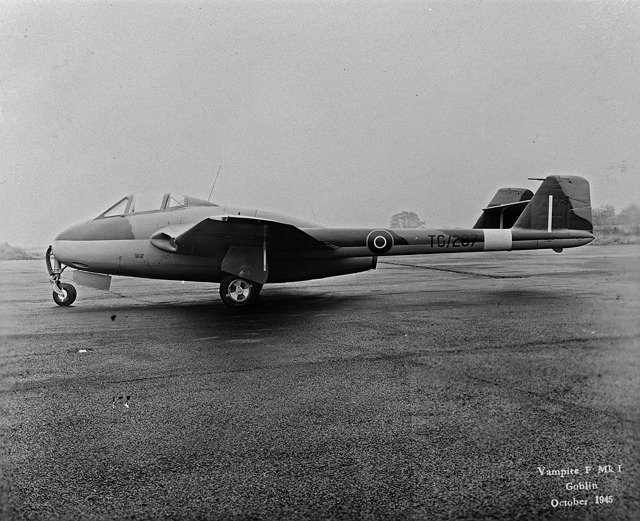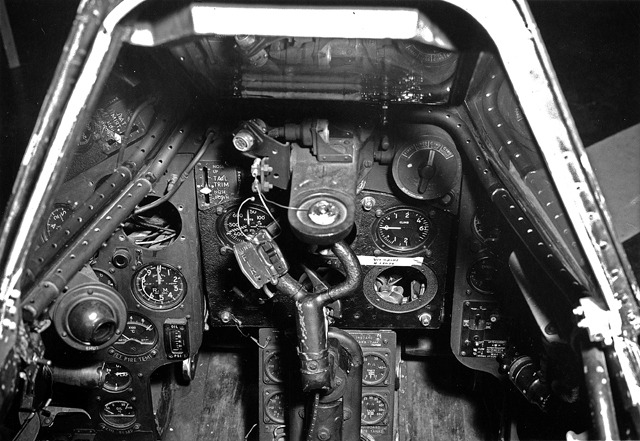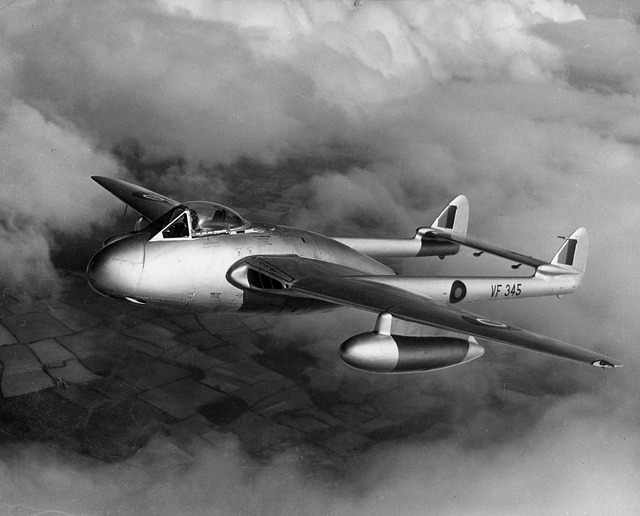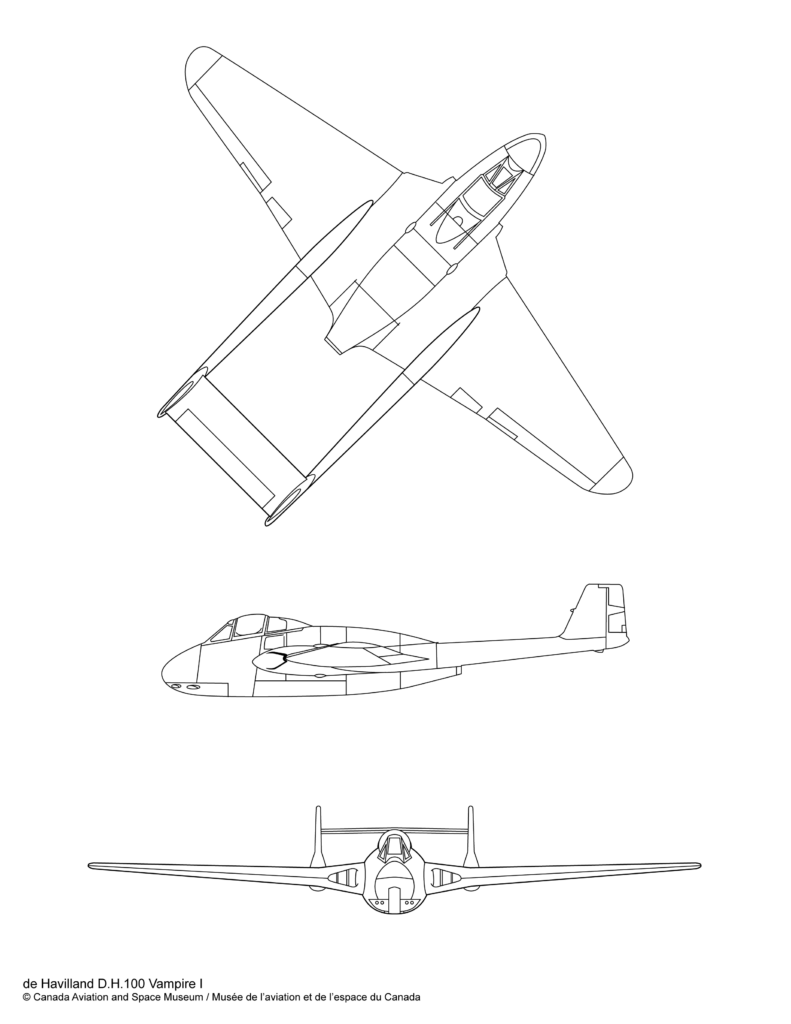De Havilland D.H.100 Vampire I
Highlights
- A sleek, fast, agile and reliable U.K.-designed jet fighter: one of de Havilland’s most successful designs
- Developed for the RAF during the Second World War (though not put in service until after the war)
- First jet fighter to enter the RCAF (1948); also flew with air forces from over fifteen countries
- First aircraft to introduce Canadian fighter pilots to jet flying, cockpit pressurization and tricycle landing gear
- Flown by the Blue Devils, the aerobatic team of No. 410 “Cougar” Squadron, performing across North America between 1949 and 1951
- A derivative, the Sea Vampire, was the first jet aircraft to fly from an aircraft carrier
- First flight was on September 20th, 1943 (prototype)

Artifact no.: 1968.0894
Manufacturer: English Electric Company Ltd.
Manufacturer location: Great Britain
Manufacture date: 1945
Acquisition date: 1968
Registration number: TG372 (RAF)
History
Production of the Vampire started just too late for it to see service in Second World War. This very successful design was produced in several versions and flew with the air forces of more than 15 countries. In 1948 it was the first jet fighter to enter the RCAF. Here, as in other air forces, it introduced fighter pilots not only to jet flying, but also to cockpit pressurization and tricycle landing gear. The last Vampires were not phased out of the Swiss Air Force until the late 1980s.
In developing the Vampire, de Havilland applied its expertise in wood construction to manufacture a fuselage of the same type of plywood/balsawood sandwich used in the Mosquito. The Vampire’s twin-boom configuration enabled the jet tailpipe to remain short in order to extract as much thrust as possible from the somewhat low-powered engines of the day. The prototype Sea Vampire was the first jet aircraft to fly from an aircraft carrier.
Current location
Reserve Hangar, Canada Aviation and Space Museum
Provenance
Transfer from Ontario Science Centre
The Museum’s Vampire I was manufactured in the United Kingdom by the English Electric Company Limited in 1945, and was brought to Canada for cold weather trials. It served with the RCAF before being relocated to the Ontario Science Centre in Toronto. It is the RCAF’s only Vampire I, the second-oldest Vampire in the world, and probably the example that is most complete and closest to its original configuration. The aircraft was transferred to the Museum in 1968. The Museum also holds a Vampire 3.
Technical information
- Wing span
- 12.2 m (40 ft)
- Length
- 9.4 m (30 ft 9 in)
- Height
- 2.7 m (8 ft 10 in)
- Weight, empty
- 2,890 kg (6,372 lb)
- Weight, gross
- 4,754 kg (10,480 lb)
- Cruising speed
- Unknown
- Max speed
- 869 km/h (540 mph)
- Rate of climb
- 1,311 m (4,300 ft) /min
- Service ceiling
- Unknown
- Range
- 1,175 km (730 mi)
- Power plant
- one de Havilland Goblin 2 centrifugal flow turbojet engine, 1,405 kg (3,100 lb) static thrust



